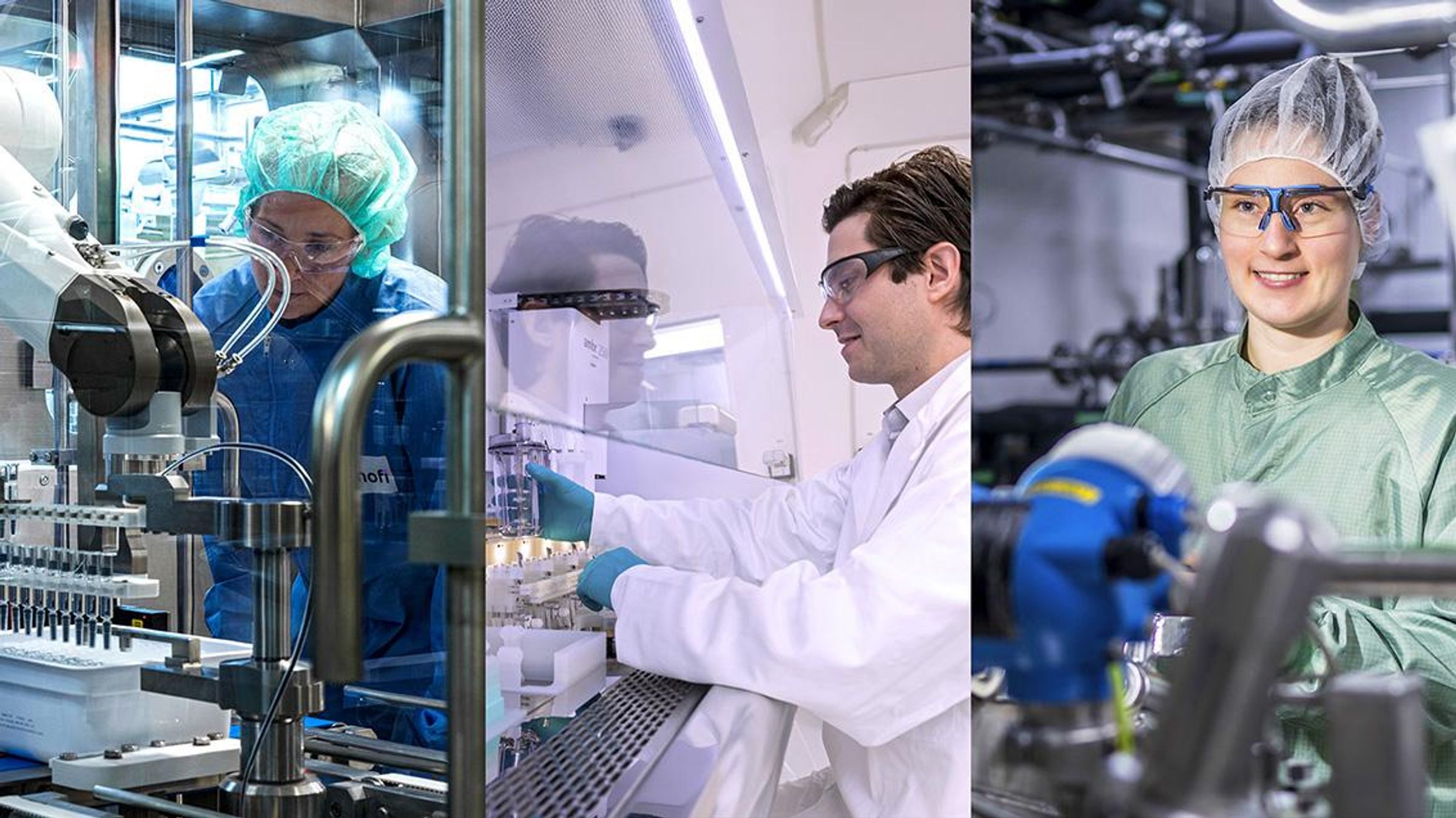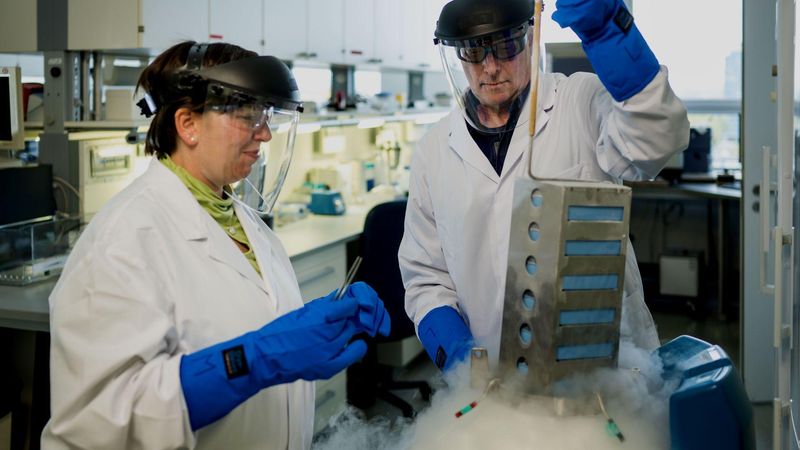From Molecules to Medicines – A Journey Through CMC Development

Imagine a sleek concept car unveiled at an auto show—futuristic, innovative, and designed to push boundaries. But before it can hit the streets, it must undergo many rounds of design, rigorous engineering, safety testing, and manufacturing adjustments to ensure it delivers the highest level of performance and reliability in the real world. In many ways, this mirrors the journey of a new medicine. A promising molecule may show potential in the lab but transforming it into a medicine that is accessible and convenient, made with a process that is robust, environmentally sustainable and scalable for making millions of doses, requires special scientific capabilities and a problem-solving mindset.
For Kripa Ram, SVP, Global Head of CMC Development, the journey of drug development is deeply personal. With a lifelong goal of bringing at least 25 products to market, (nearing 20 so far), his relentless drive to turn molecules into medicines reflects the spirit of the entire team.
Our team of scientists and engineers is wired to design, optimize, and problem-solve with a heightened sense of urgency. When you layer those skills with a desire to help patients in need, you can turn molecules into medicines.

Kripa Ram
SVP, Global Head of CMC Development
The Science Behind Bringing Medicines to Patients
The critical role of CMC (Chemistry, Manufacturing, and Controls) is not fully understood, both outside and even sometimes within the pharmaceutical industry. It is the bridge between discovery in the research lab, where a molecule is selected because of its suitability to treat a certain disease, and the patients who need medicines in the final dosage form (e.g., syringes or tablets). While the safety, efficacy and dosage for patients are defined in clinical trials, it is the role of the CMC organization to make sure that the medicines themselves meet several requirements. First, the manufacturing processes must be highly productive, robust, and eco-friendly to enable routine and sustainable commercial manufacture. Second, the product (e.g., tablets or syringes) must be stable, so that it maintains quality over a long shelf-life. Third, the final dosage form must be convenient to the patient. Above all, the process and the product must be compliant with the quality regulations established by regulatory authorities. All these elements are collectively reflected in the term CMC.
CMC Simplified
Chemistry
As Ram simply puts it, “we develop the process for making the medicine, ensure it lasts in storage, and guarantee that every dose is of the highest quality, whether in a clinical trial or on the market.”
Turning Challenges into Breakthroughs
Developing an industrial process for a molecule that has never existed in nature before is not without its challenges. One of the greatest challenges in CMC is optimizing the production process to ensure high productivity. Ram recalls a particularly daunting case involving an investigational synthetic molecule. The initial manufacturing process for early-phase trials had more than 25 chemical steps, which made it extremely costly, environmentally unfriendly, and too time-consuming. Through innovative scientific approaches and exceptional teamwork, the CMC team substantially reduced the number of steps and cut undesired solvents by 90%, which in turn cut costs fivefold.
Another source of challenges are unexpected issues that arise during development. One recent example was in the development of an antibody medicine produced by living cells rather than chemical synthesis. Despite extensive purification, an enzyme produced by the cells remained in the final formulation, albeit at very low levels. Over time, this enzyme degraded an additive (surfactant) that protected the antibody, which in turn compromised the medicine’s stability and potential shelf life. Identifying the root cause was especially challenging, because the levels of the enzyme were so low and the degradation was extremely slow (months). The team worked to uncover the issue and ultimately replaced the surfactant with another that was resistant to enzymatic degradation.
These behind-the-scenes problem-solving efforts sometimes more closely resemble a forensic investigation than drug design, but they are essential to delivering high-quality medicines to patients. “I like challenges,” Ram says.
As molecules are becoming more complex, they’re more difficult to make and understand. But we must still deliver processes, formulations and analytical methods so that the drug can withstand the test of time.
Kripa Ram
SVP, Global Head of CMC Development
“Once we transfer a compound to our Manufacturing and Supply organization, they will be making batch after batch for years; it is extremely cumbersome to make changes to the process once it is approved by regulators.”
Harnessing AI to Transform Drug Manufacturing
Technology is revolutionizing CMC, with AI playing an increasingly vital role in manufacturing. Sanofi was the first pharmaceutical company to develop an industry-leading continuous manufacturing process, now implemented at its award-winning, digitally enabled Framingham, Massachusetts site. Advanced digital tools, including neural networks, machine learning (ML) and AI, help develop better processes faster and control manufacturing with limited oversight to deliver consistent batches.
“AI is revolutionizing how we manufacture medicines,” Ram says. “We can optimize every step of the process, improving efficiency while reducing environmental impact.”
Advancing the Future of Drug Development
An important future direction is the maturation of new modalities. Beyond traditional modalities such as “simple” synthetic molecules and antibodies, newer modalities such as multi-specific antibodies, antibody-drug conjugates, gene therapy and non-viral (mRNA) gene delivery are all significantly more complex. Even synthetic molecules in today’s pipeline are several-fold more complex than ever before. These projects are demanding more scientific innovations from CMC organizations, and CMC must play an even greater role in accelerating the path from discovery to commercialization.
For Ram and the CMC team, every challenge is an opportunity to innovate, and every breakthrough is a step closer to delivering potentially lifechanging therapies. With a commitment to excellence, they are turning visionary concepts into reality—one discovery at a time.
Explore More
